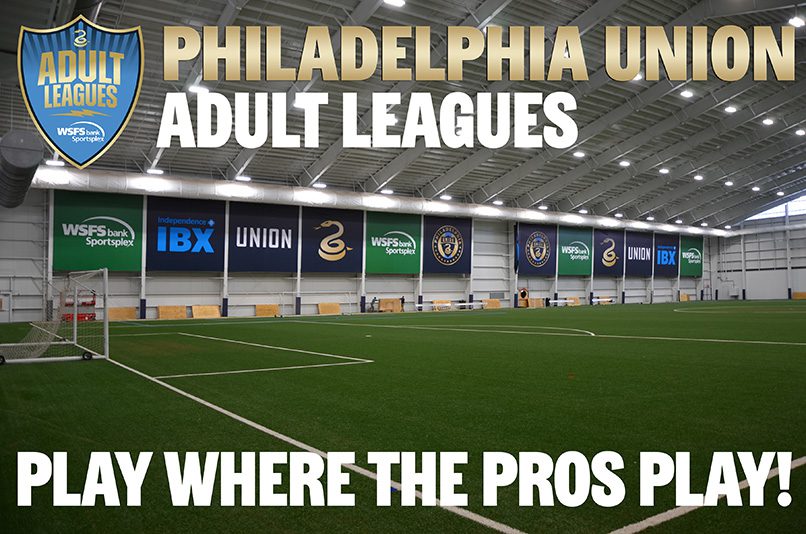Philadelphia Union
Advanced metrics still like the Union but there is a dropoff in key places

The Philadelphia Union are in the middle of two distinct seasons. In the first one, they are a final four team in their continent and are set to battle perhaps the best team in the continent, LAFC.
In the second season, they sit 10th out of 15 teams and haven’t won a game since March 11.
Part of this is by design. The schedule has been intense, and head coach Jim Curtin has prioritized the Concacaf Champions League matches so far, understanding the unique opportunity they represent, and that there’s time to fix the MLS part of the season.
It’s early, but the advanced metrics still like the way the Union are playing in the league. There’s two key early indicators to look at – expected goal difference and goal added difference.
Expected goal (xG) difference is the more mainstream concept that looks at goals a team would be expected to score or allow given the quality of shots taken. The objective is to remove any short term noise in the data, and has been proven to be more accurate in terms of predicting longer term success.
The other metric is Goals Added (g+) difference. This metric analyzes every single action a team takes and measures the increase or decrease in the goals expected to be scored once the action is completed versus the goals expected to be scored by the opposing team. Sounds complicated, but think of it as a more comprehensive attempt at capturing expected goals, because it involves all passes, and not just shots.
The good news is the Union are scoring pretty well on these metrics. Looking at the xG model from AmericanSoccerAnalysis.com, the Union rank third in the East. Looking at the same model at FBref.com, the Union rank fifth in the East.
American Soccer Analysis also publishes Goals Added for teams and players. The Union rank second in the East in g+ and fifth in MLS overall.
The metrics should provide some comfort that the Union are playing better than the table would suggest, but it’s a far cry from the dominance they posted last year. Let’s take a look at their change in g+ across the field and by player to see where the impact is greatest.
Here’s a view of different sections of the field and where the Union are efficient at creating goals. The top green number compares their change in 2023 goals added per game with last season. The bottom blue number shows how many goals added per game they create relative to league average.

Looking at the Union in the attacking right hand side. They’re performing .07 goals added worse per game than last year, but are still .08 goals added per game better than the average team. I think we all recall how the Union repeatedly used that triangle of Olivier Mbaizo, Alejandro Bedoya and Daniel Gazdag to open spaces and create opportunities from the right hand side. Those Bedoya cutbacks, or Mbaizo crosses, or Gazdag when he would pull that ball to the middle of the pitch. The magic has not been as apparent this season.
The Union are most efficient relative to the league in the attacking middle, but that advantage is significantly weaker than it was last season. The slippage on Kai Wagner’s side is barely perceptible, but it’s not been the Union’s best side historically from an attacking perspective.
All across the pitch the Union are performing less efficiently. In the bottom two thirds of the pitch the team was above average last year, but has slipped to below average performances so far this year.
Goals added can help us see what’s happening and where, but we need to dig a little deeper to learn more.
Here’s a view by player comparing their 2022 and 2023 season so far.

It’s worth noting that Goals Added only values each touch, and can’t take into account a player’s ability to position themselves in a way that allows other touches to take place or that might force the opposing team to steer to a less opportune area. In other words, it’s not a completely comprehensive score.
With that caveat we can explore how the Union players are doing. So far Carranza has performed best of all the position players this season, and he’s one of a handful whose play has not dropped off. Leon Flach, Jack McGlynn, Jose Martinez, Wagner, and Jakob Glesnes are the other players whose form is at or better than last year.
There is a slight decline in the play of Gazdag, Bedoya, Jack Elliott and Mbaizo, but they are still performing at a reasonable level. Bedoya is taking some heat for his play, as his age makes him an easy target, but he’s playing at a solid level, and when you factor in his outstanding positional play, he still appears to be more than a valuable member of the team. He passes the eye test as well, at least for me.
We’re witnessing pretty dramatic drop-off in the play of Uhre and Blake. Uhre is not playing poorly, but he was exceptional last year. The Union need more from him if they want to repeat that transcendent form.
Blake was mind-boggling last year, and my sense is that the groin injury is altering the quality of his touches. He’s also had reduced chances to make game changing saves, but he’s still clearly playing at a high level.
It may not be a coincidence that the right side attack of Mbaizo, Bedoya and Gazdag has fallen off this year. The opponents have had an offseason to diagnose the Union success on the right and focus on jamming it up. The challenge that Curtin has is how to either create that magic in a new area of the pitch or create a different advantage in the same area.
Regardless of whether or not Curtin has a few tactical tricks up his sleeves, advanced metrics indicate the Union are playing at a playoff level, and should be improving in their league play.
Here’s to hoping that dominant form shows up in short order.























